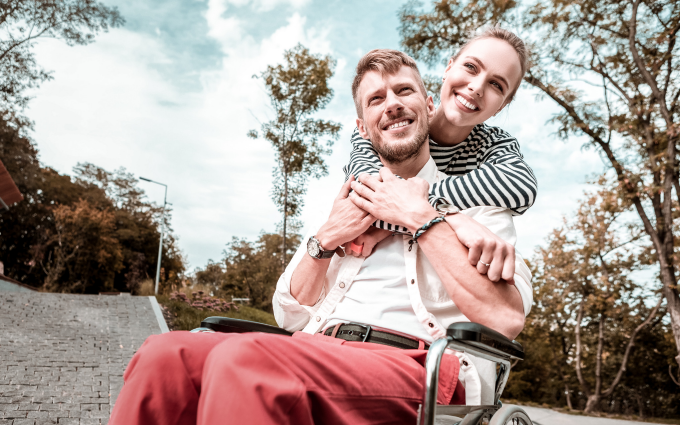02/11/2019

Nearly all aspects of life, including sexuality, are changed by a catastrophic injury. Spinal Cord Injury, in particular, can profoundly alter self-image and sense of worth.
A case manager prepared with knowledge to guide the conversation can encourage any concerns to be spoken and addressed, even in the acute care setting and during the rehabilitation inpatient stay.
Let’s look at this topic in three parts:
Both genders experience significant psychosocial stress after any catastrophic injury. First, there is the emotional impact of the trauma and a near-death experience. Then, physical impairments change the person’s perception of his or her body image. Many questions arise that are so personal they are often not voiced. “Am I still attractive?” “Will my marriage survive?” Or “Will I be able to meet someone who will love me?” The result is often a loss of a sense of control over one’s life.
Certainly, the loss of privacy during an inpatient stay can contribute alterations of self-esteem. Later on, if the results of the catastrophic injury include wheelchair use, the person in the chair finds that he or she is surrounded by a world of standing people. All these psychosocial issues deserve attention.
General effects of neurological disability on sexuality include alterations in bowel and bladder continence, decreased mobility, pain, fatigue, altered sensation, spasticity, and medication side effects. In addition, brain injury and SCI both impact the production of hormones that influence sexual desire and physical functions.
With some awareness of how SCI affects self-image and sense of worth in very powerful ways, let’s look at its physiological impacts. Sexual neurophysiology after SCI involves four aspects of neuro anatomy:
The degree of impairment varies by the level and completeness of the injury. Fertility is often severely impaired in men with SCI. After an initial interval of interruption of menstrual cycles, fertility in women is usually unimpaired. So contraception and pregnancy management must be considered.
Bladder or bowel incontinence may cause embarrassment and hygiene issues. Many people with SCI depend on bladder or bowel management. If the injured person must rely on his or her partner for intimate hygiene care, this role change may amplify the upheaval in their sexual lives.
Case managers must be well aware of these psychosocial and neuro physiological effects of SCI for both male and female injured workers. A caring approach to each person encourages those who are reticent to raise the questions mentioned above and many others.
A case manager who is comfortable with the PLISSIT model is prepared to initiate such a conversation. The four progressive degrees of intervention, as described by Jack Annon in 1976, are:
In 2006, the PLISSIT model was extended by Taylor and Davis to give increased emphasis to the permission-giving step. Their name for their extended model is the EX-PLISSIT model.
Discussing the important and intimate topic of sexuality after a catastrophic injury is central to restoring an injured worker’s quality of life. A wise and compassionate case manager can provide safe parameters for the ongoing conversation, as well as the tools and resources to address the needs of the injured worker and his or her spouse or partner.
For more detailed information about the psychosocial and physiological implications of SCI, here are some valuable resources:
Follow Paradigm on Facebook, Twitter and LinkedIn to stay up-to-date on industry news.